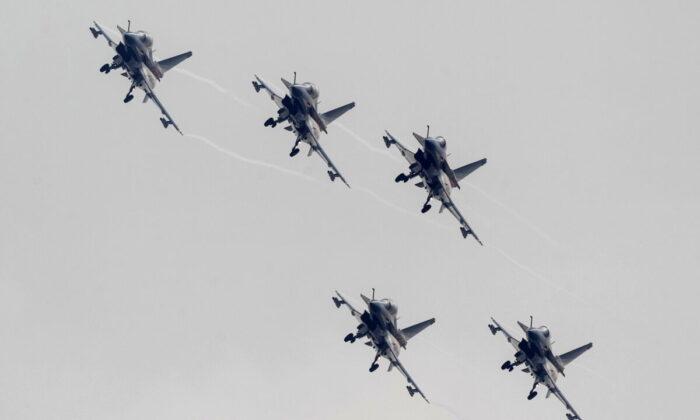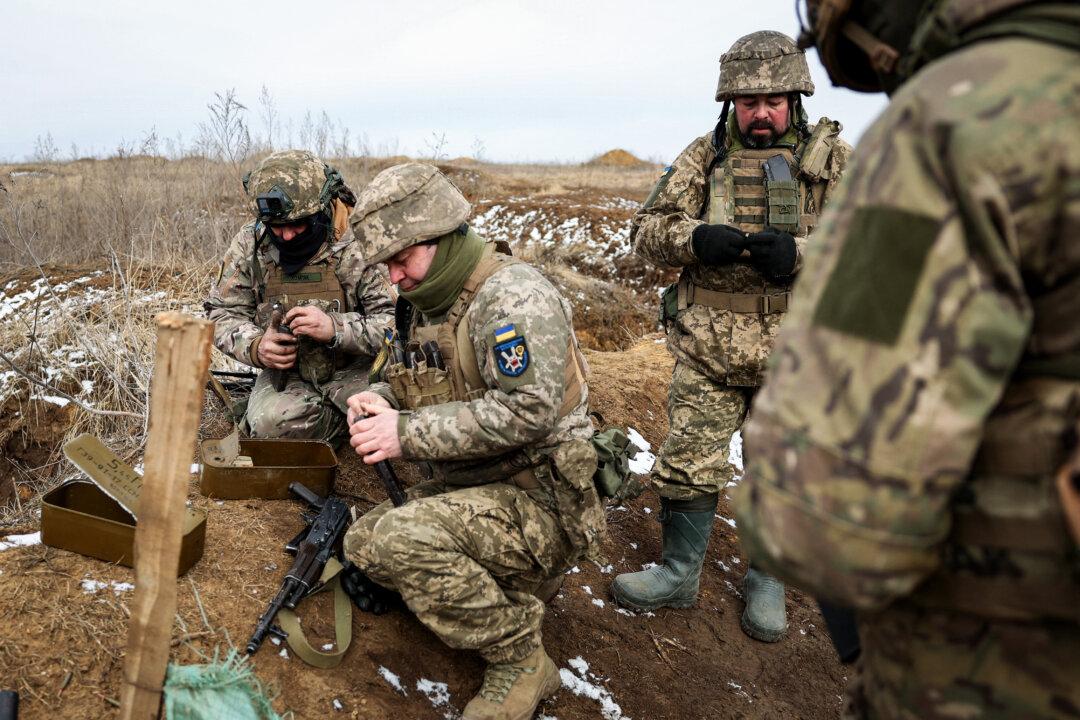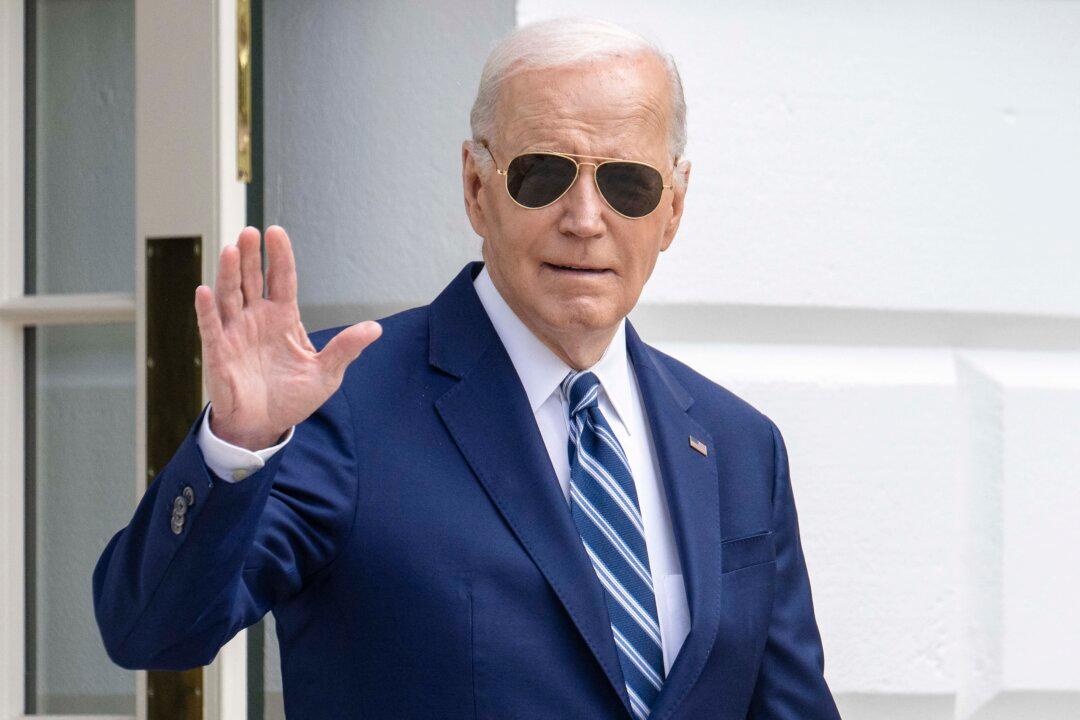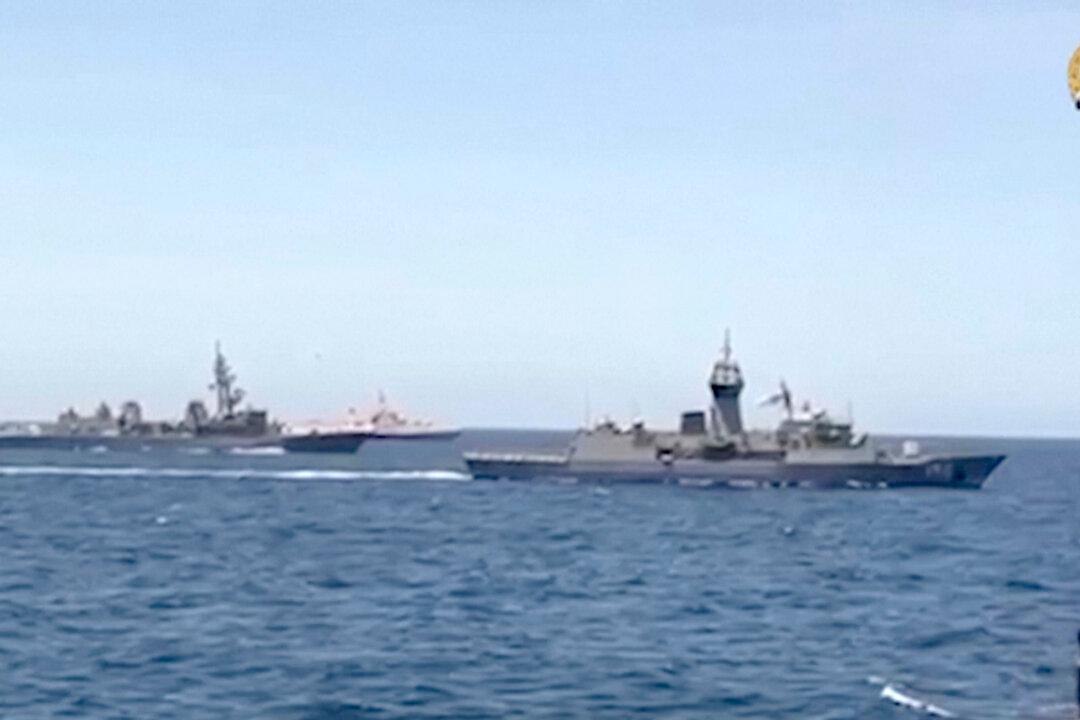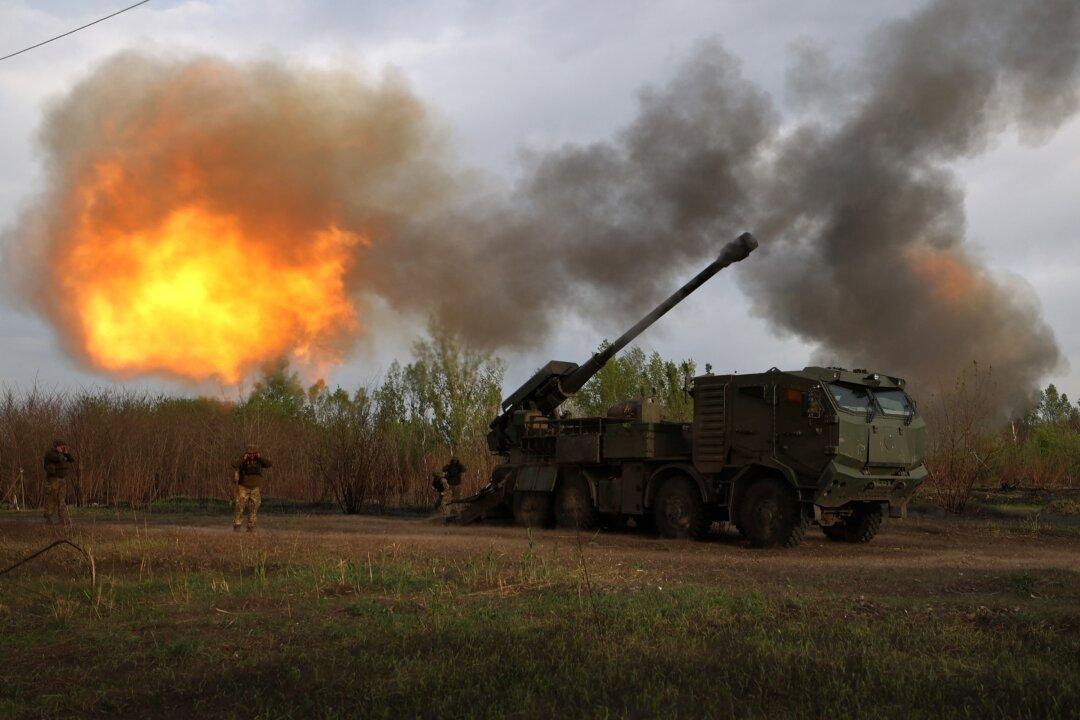It’s late May and an Australian surveillance plane flies through the azure skies above the South China Sea. The crew of the aircraft is on a routine surveillance mission in international airspace. They don’t expect trouble.
Suddenly, a Chinese fighter jet intercepts them.
It launches flares and cuts fast and close across the nose of the Australian aircraft. The fighter then deploys its chaff, a bundle of tiny metal strips typically used as a countermeasure to disrupt an enemy’s radar systems.
The innumerable little shards of aluminum are immediately sucked up into the engines of the surveillance plane, damaging the aircraft, putting its crew at severe risk, and cutting the Australian mission short.
While international leadership has refrained from considering the event an act of war, it is just one of a growing number of hostile encounters between the military forces of China’s communist regime and those of America’s closest allies.
Aggression Against America’s Allies
Tan Kefei, a spokesperson for China’s Defense Ministry, accused the Australian crew of “disregard of repeated warnings from the Chinese side” and of entering airspace over the Paracel Islands, a disputed territory of which China, Taiwan, and Vietnam all claim ownership.Tan didn’t present any evidence to support the claim.
Nor did he connect the dangerous maneuver to a growing number of incidents conducted by the Chinese Communist Party’s (CCP) military wing, likely intended to intimidate U.S. allies away from engagement in the Indo-Pacific region.
Indeed, Chinese fighter pilots are becoming increasingly aggressive with international encounters to the point of recklessness, frequently “buzzing” allied aircraft and ships, flying so close as to cause turbulence and force allied missions to take detours from their intended routes.
China’s Quest for Revolutionary Martyrs
To the questions of why now, why America’s allies, and why like this, there are few exceptional answers that highlight the ambition and strategy of the CCP in the Indo-Pacific.However, the tactic of using high-publicity stunts and intimidation goes back much further than China’s likely sanction busting and has deep precedent in the past 20 years of CCP propaganda and doctrine.
Then-CCP leader Jiang Zemin subsequently declared Wang a “guardian of the seawaters and airspace,” and CCP propaganda celebrated him as a “revolutionary martyr,” forever enshrining his actions in the cultural lexicon of Chinese military tactics.
Now, 21 years later, Xi Jinping’s CCP is unloading a new barrage of military psychological operations against the United States and its allies in an apparent attempt to push the Western powers into a retreat from influence in the Western Pacific.
‘Weakening the Enemy’
With the exception of one close encounter between U.S. and Chinese fighter jets, the CCP’s campaign of aerial intimidation has focused heavily on U.S. allies, but not the United States itself.“If China intends to invade Taiwan, the CCP wants to intimidate U.S. allies to make them think twice about supporting economic sanctions or a ground war,” said Casey Fleming, CEO of risk management firm BlackOps Partners.
“Hybrid warfare is based on weakening your enemy through any and all means possible,” Fleming said. “[These] intimidation tactics are meant to show strength and willingness to fight should a ground war take effect in Taiwan.”
As such, recklessness in air-to-air confrontations between the CCP and allied forces shouldn’t be considered isolated incidents. Rather, they’re a key part of China’s strategy to demoralize and weaken U.S. allies and partners whom China’s communist leadership fears may assist the United States in the event open conflict erupts in the Indo-Pacific.
To that end, Fleming said the best practice Australian, Canadian, and other allied forces could implement was to document and publicize each and every encounter and continue to demonstrate their ability to fly freely through international airspace in spite of CCP outbursts.
“Our allies need to record and document these intimidation tactics while continuing undeterred in their legal flights,” Fleming said.
